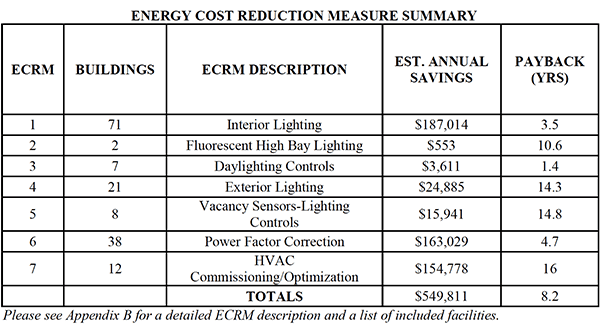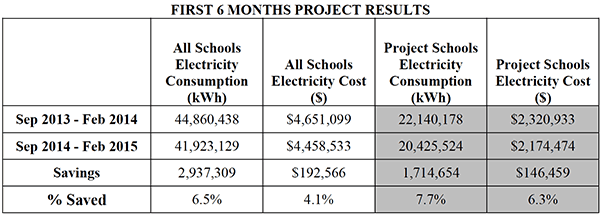« Return to FMDAA entries

Arlington (Texas) Independent School District
CATEGORY: Sustainability
Overview
Arlington Independent School District is located in the Dallas-Fort Worth metroplex. Arlington ISD is the 11th largest school district in Texas with 64,000 students and over 9,500,000 square feet of conditioned space. Arlington ISD’s energy management program was started during the 2010-2011 school year because of concerns about energy usage and rising utility costs. To date, the District’s efforts have reduced energy consumption by 14,619,169 kWh per year and avoided over $6.6M in utility costs by implementing low-cost and no-cost energy reduction measures.
Problem
Since we are a public school district, our aim is to improve the learning environment for our students. As stewards of public tax funds, we strive to reduce electricity consumption and cost so more funding reaches the classroom.
We performed preliminary assessments of these facilities and determined these potential projects:
- Interior lighting upgrades
- Interior lighting controls
- Daylighting controls
- Exterior lighting upgrades and controls
- Power factor correction
- HVAC System commissioning and optimization
Like most public school districts, we had no dedicated budget or funding method for energy projects. While the district had system optimization and replacement needs, we had limited internal staff. In summary, we had potential for improvement but limited resources to invest in order to capture the savings.
Process
As no funding source was readily available, a creative outside funding source was needed. We decided to utilize the Texas State Energy Conservation Office (SECO) LoanSTAR revolving loan program.
Please see LoanSTAR attachment for more details about this program.
LoanSTAR provided an up-front funding mechanism, administered by the state of Texas, and with requirements for third party oversight to protect the district. The district had staff experienced with procuring LoanSTAR funds and capable of coordinating qualified engineers, contractors and vendors to assist in applying for and implementing the process.
One important feature of the LoanSTAR program is that it allowed us to combine different types of energy projects (capital and low cost/no cost) for a cumulative payback of less than 10 years. This was important to make the most significant savings and facility improvement impact.
Project Summary
Once the funding method was selected, a detailed energy assessment report (EAR) was completed for each facility. Project types were defined and implementation costs and savings were projected. There were seven distinct energy cost reduction measures (ECRMs) defined and a report was submitted and approved by the state.

Challenges
As with any project of this scale and cost, the first task is to gain support from the district administration and board of trustees. This was achieved due to demonstration of past success on similar projects and we are very thankful for the support received.
Another significant challenge was minimizing the impact to the learning environment. The scope of the projects required coordination on the part of each campus, as well as food service, custodial, electrical and HVAC staff. This included the management of multiple projects at the same facility, coordination with summer school activities, and completion of projects in a very compressed schedule.

Power Factor Cost Savings report
The electricity cost savings from ECRM 6 – power factor correction are not included in the above chart because the savings are not associated with reduced consumption but with the avoidance of penalties from the Utility provider.

Utility Incentives
In conjunction with these projects, we were also able to obtain $200,000 in incentives from the utility provider. Each project followed utility guidelines for incentives and strict Measurement and Verification protocols.
Better Learning Environment
Projects resulted not only in cost savings, but a better campus environment. The lighting upgrades provide better quality lighting in classrooms. The exterior lighting upgrades provide safely lit parking lots and building entrances. The HVAC optimization improved thermal comfort for occupants. All of these benefits were in addition to substantial cost savings.
In-house Participants
Jeff Thomas, Operations Manager
David Guillory, Electrical Supervisor
Terry Rogers, HVAC Supervisor
Alan Hannush, Food Service Maintenance Coordinator
Danny Helm, Energy Manager
Jennifer DuPlessis, Director of Maintenance & Operations
Bob Carlisle, Executive Director Plant Services
Cindy Powell , Chief Financial Officer
AISD Board of Trustees
Additional Information
» View - History of LoanSTAR program (PDF)
» View - Energy Cost Reduction Measure (ECRM) Descriptions (PDF)
↑ Back to top











